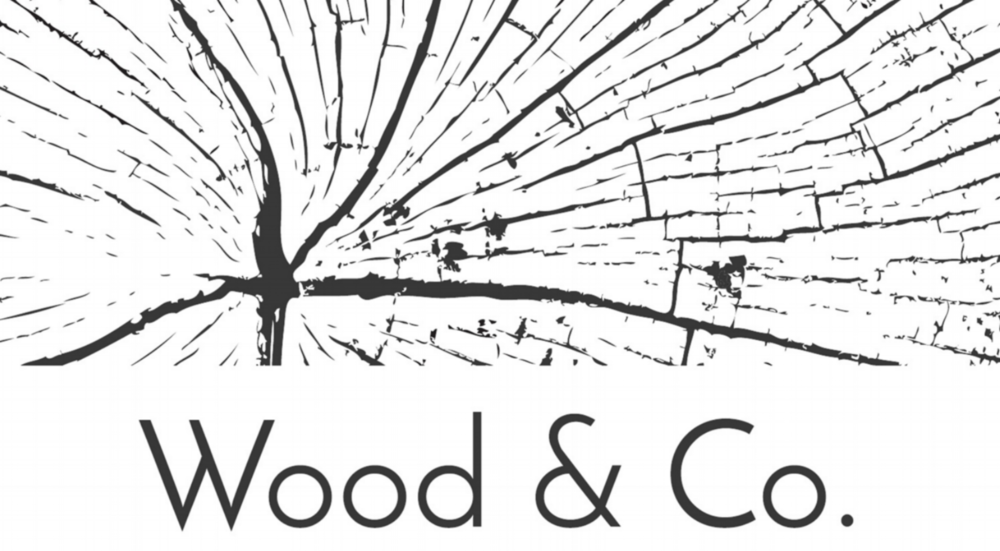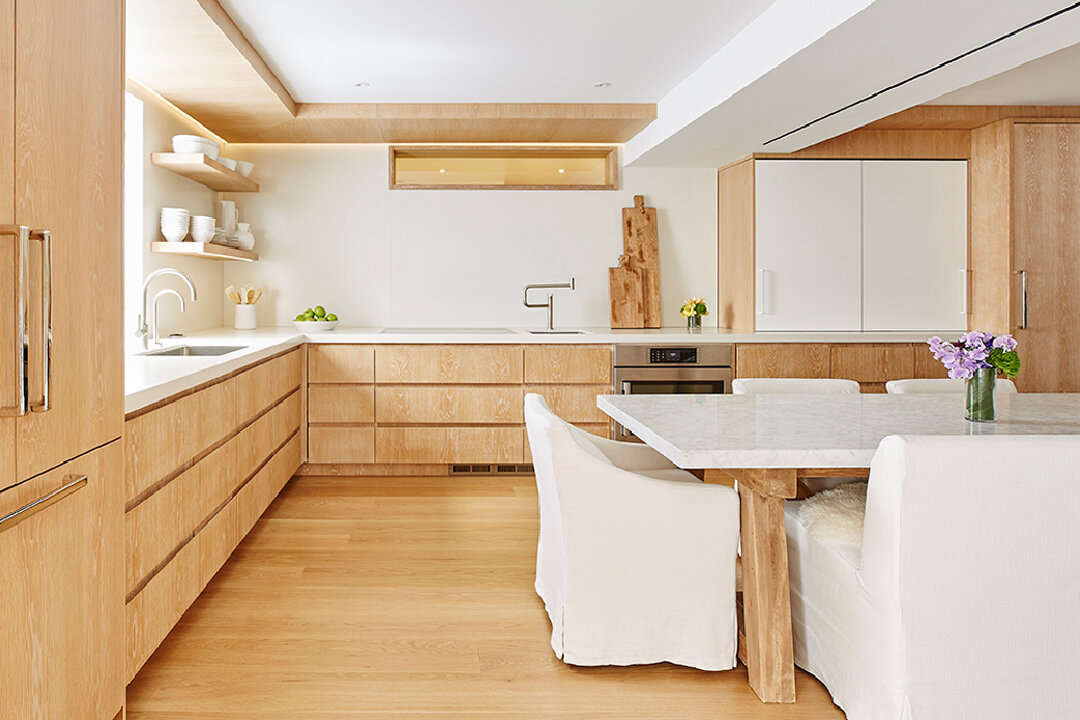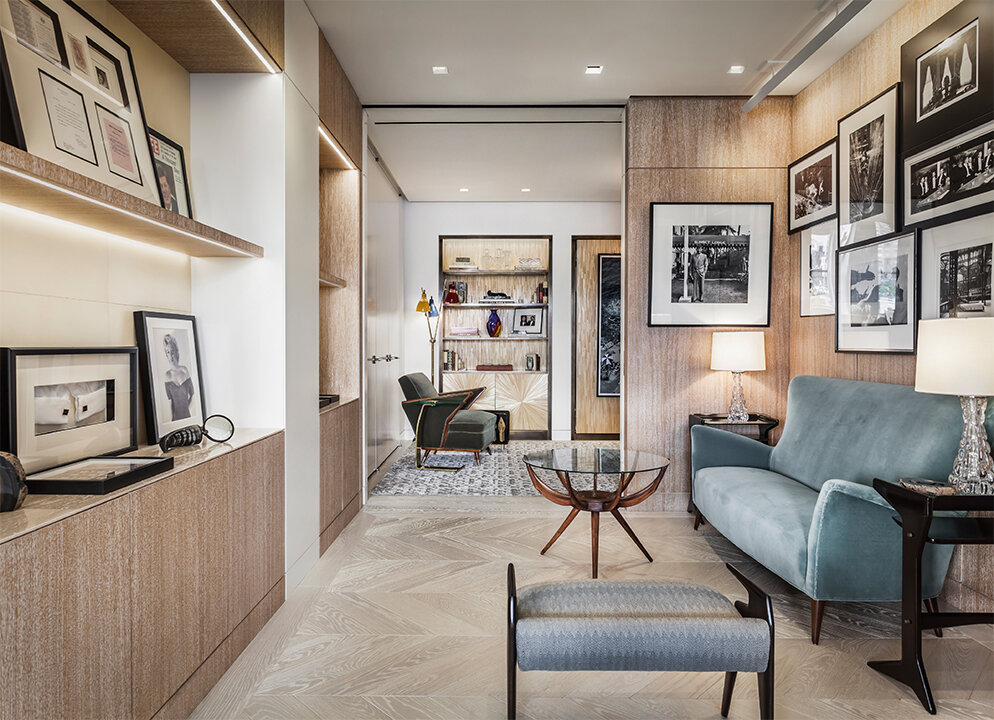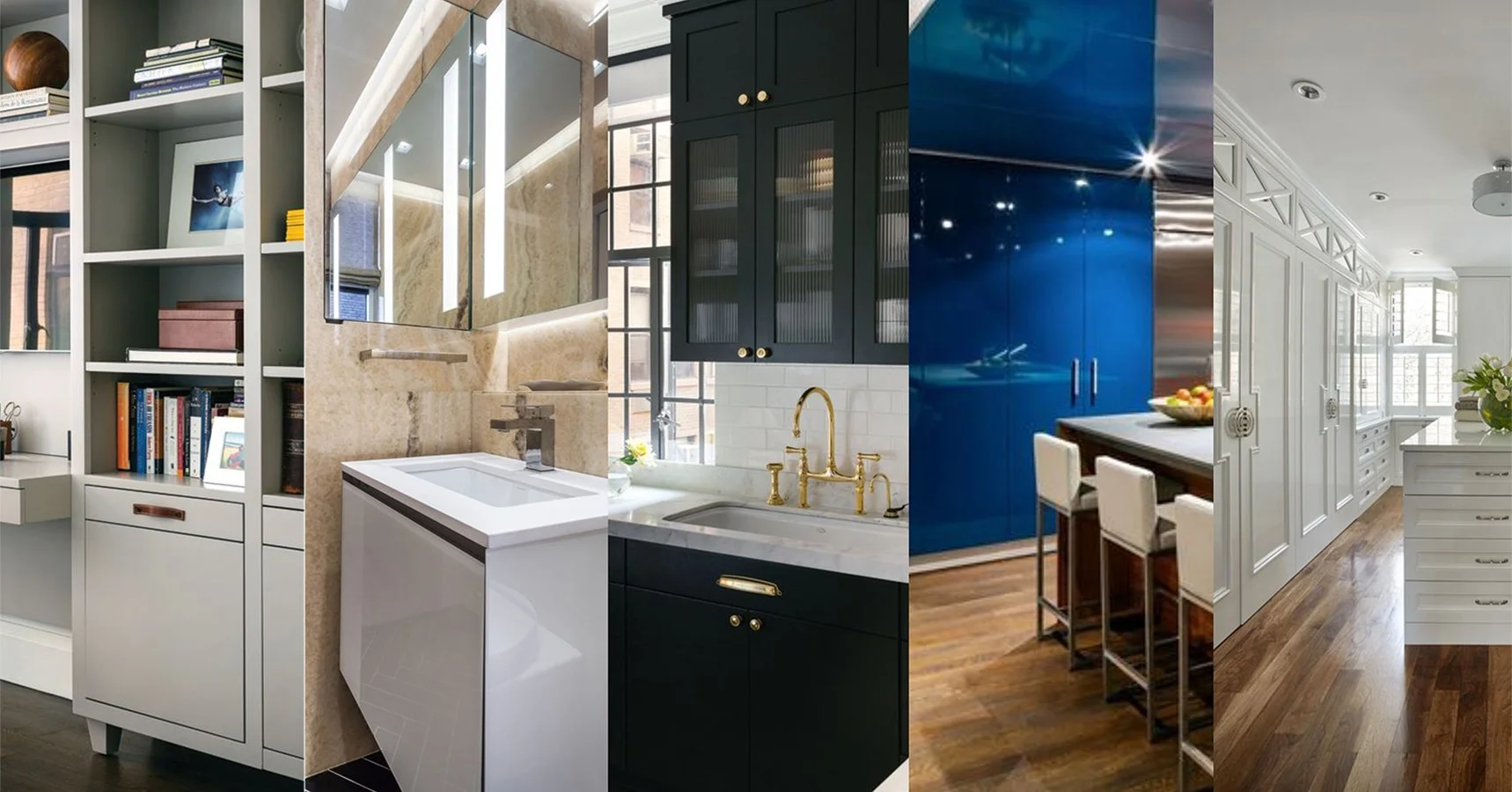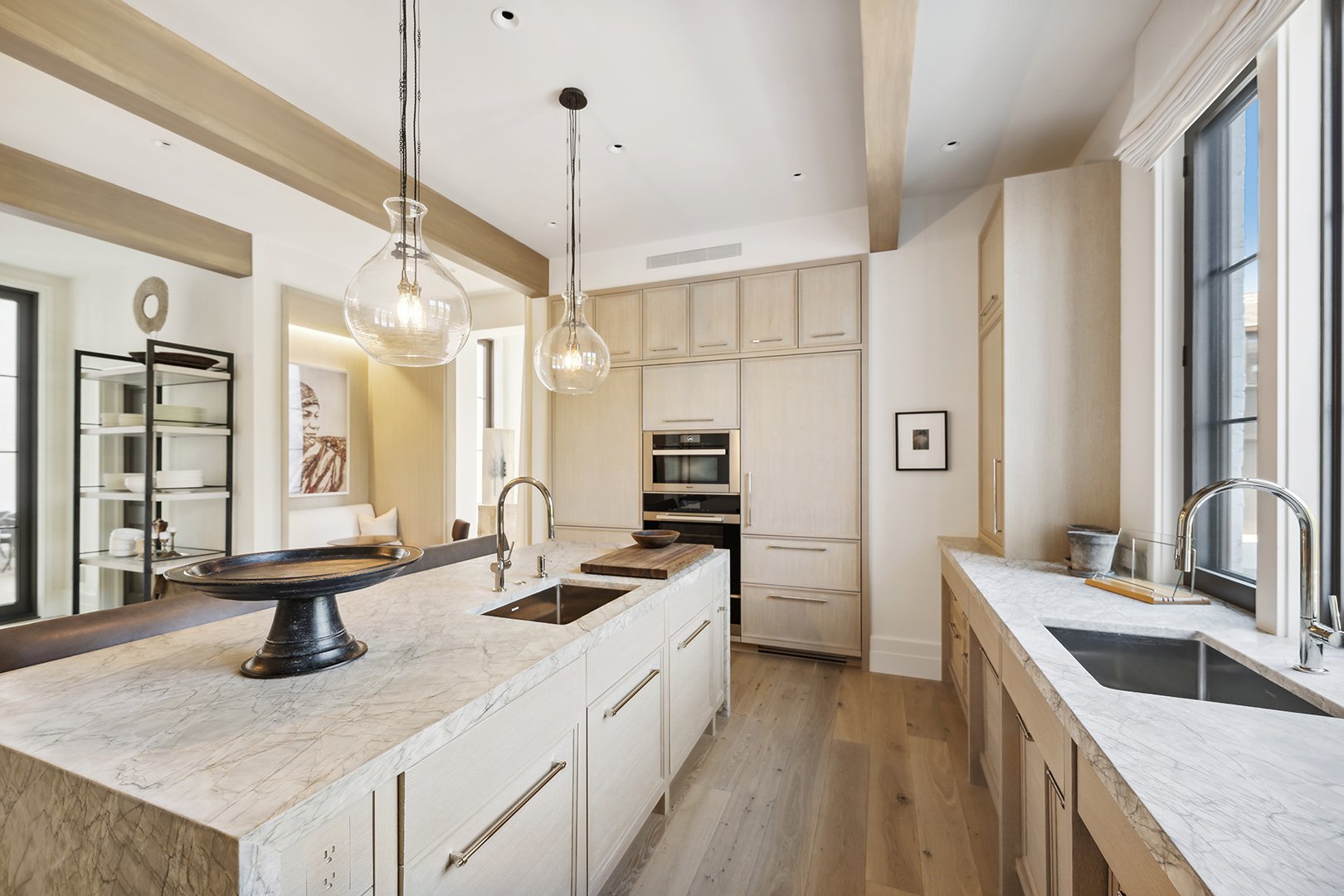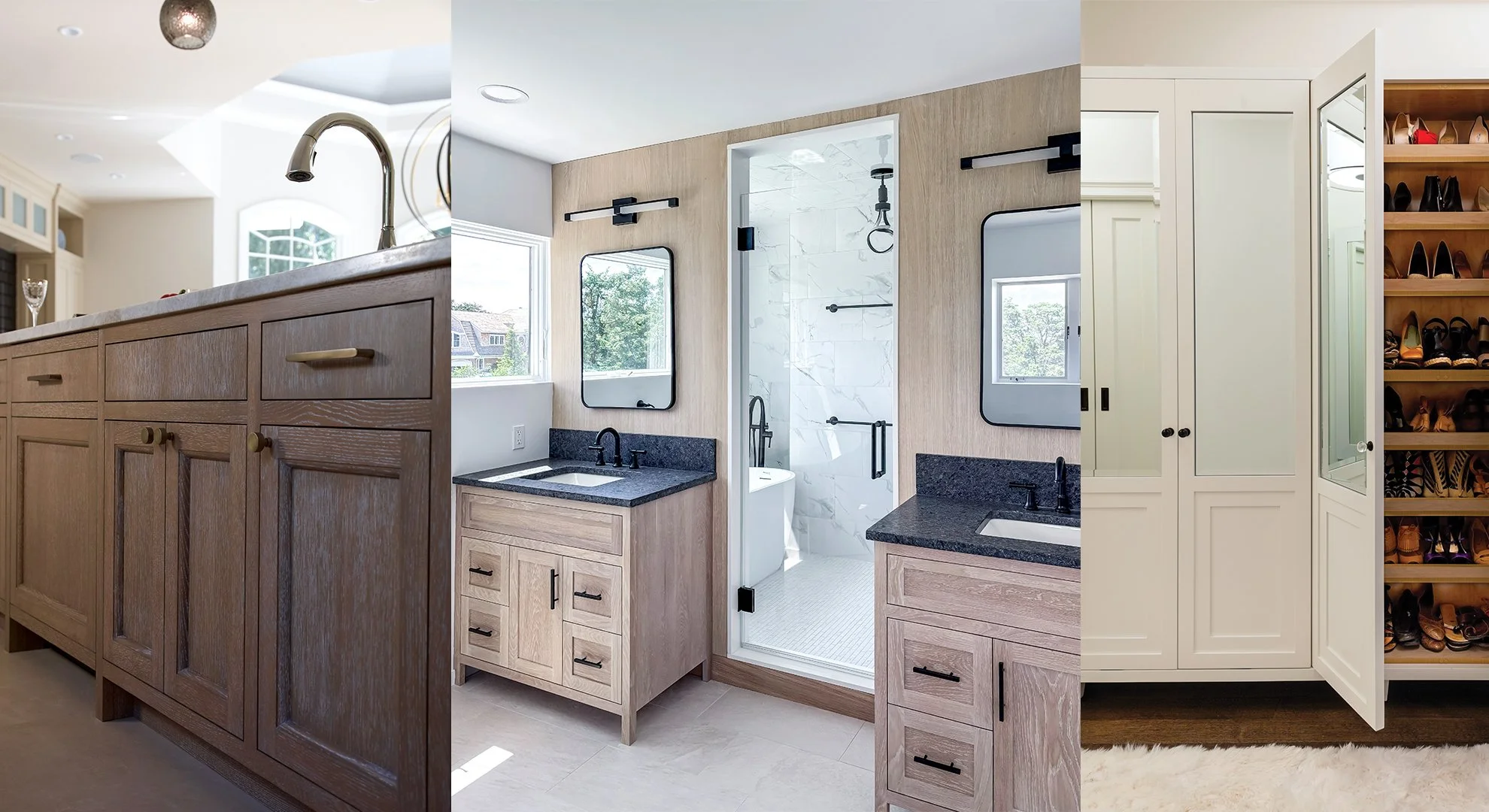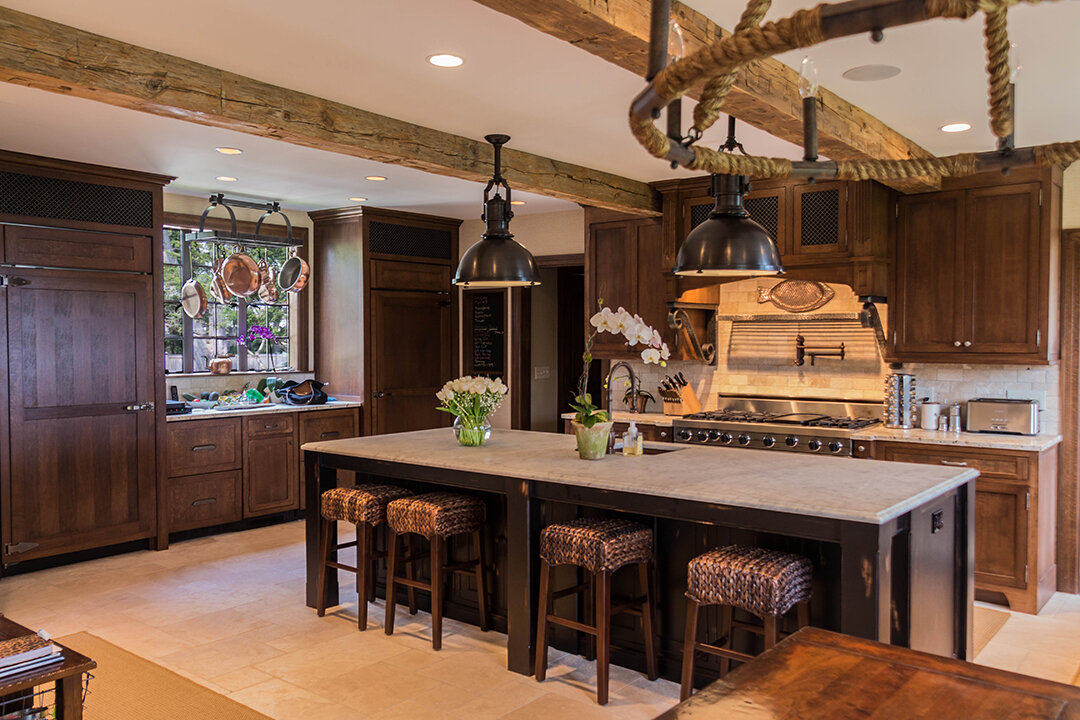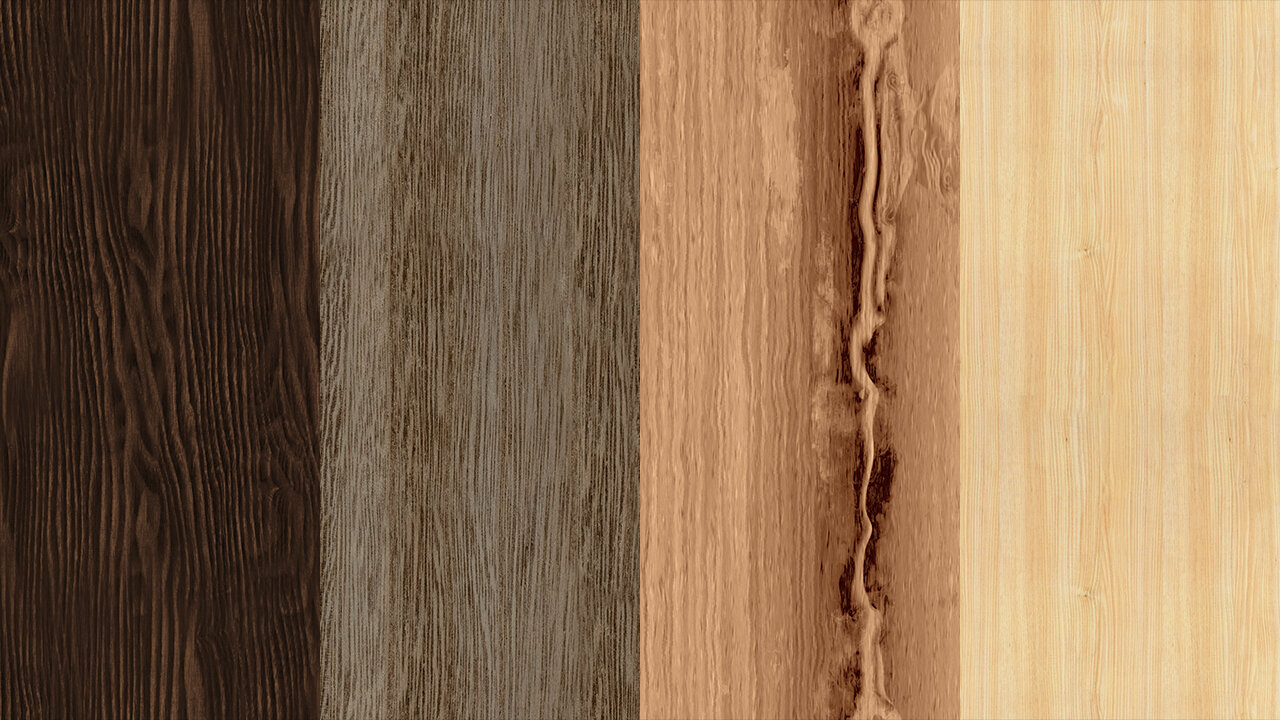A great number of people love natural hardwood cabinets and furniture. Their beautiful wood grain patterns have a unique charm and aesthetic that make our homes feel more warm and welcoming. Aside from just specifying a certain species, did you know you can also choose what type of grain pattern your new piece will have? Even within the same wood species, such as oak or walnut, you can get a different look depending on how it’s cut from the log. Lumber is typically cut in one of three ways: plain sawn, quarter sawn, and rift sawn. You may have heard your designer or builder throw around terms such as “plain sawn walnut veneer” or “rift sawn white oak cabinets” and wondered what these meant. Today, we’ll explain what these types of cuts are and how that can affect your cabinetry.
Plain Sawn
When one thinks of wooden cabinetry, it’s common to imagine arch-shaped or so called “cathedral” wood grain. This type of pattern is found on plain sawn lumber. Another term for this is flat sawn lumber. This is the simplest type of cut where the log is milled through and through in the same direction. This utilizes the entire log, thus minimizing waste, making plain sawn wood the most affordable and sustainable cut of lumber.
When it comes to furniture and cabinetry, plain sawn wood is used when you want to highlight the variances in wood grain. This creates a dynamic look as no two cabinet doors or drawer fronts will have the exact same pattern. The disadvantage of this cut of lumber is that it’s the least stable and most prone to cupping.
Stained plain sawn oak walk-in closet by Wood & Co.
Quarter Sawn
When milling for quarter sawn lumber, a log is first divided into quarters then each quadrant is flat sawn. As you can imagine, this is a more labor intensive process than plain sawing. On top of that, it produces more waste as the very last cuts will be too small to be usable. These factors combined make quarter sawn lumber more expensive.
What you get from this, however, is a more linear grain pattern. In certain species, such as red oak and white oak, this cut also shows flecking or rays in the grain. This can add a layer of dimensionality and uniqueness to your wood surface, while still maintaining a relatively uniform look. When you don’t want the busier look of plain sawn wood, then this is a great option. Another advantage of quarter sawn wood is that it’s more stable and less prone to cupping and warping, making your pieces last longer.
Quarter sawn white oak cabinets and wall paneling by Wood & Co.
Rift Sawn
The last of the three types is rift sawn lumber. In this method, a log constantly rotated so that it’s is milled perpendicular to the annular growth rings. This is the most labor intensive and most wasteful of the three methods. Because of the low yield from each log, rift sawn lumber is the most expensive of the three types. Through this method, you get wood with a tight linear grain pattern with minimal flecks and rays. This offers the most uniform and consistent visual aesthetic you can get with a wood finish. As you may have guessed from the trend, rift sawn wood is also the most stable cut of the three. These two aspects together makes it highly sought after for custom cabinetry, wood flooring, furniture, and other crafts.
Rift sawn cerused white oak cabinet by Wood & Co.
Which Should I Use for My Cabinets?
Just from reading the explanations for the three methods, it may seem like going for rift sawn cabinets is the way to go. But as with most decisions in life, it’s not that simple. Aside from the wood grain of your cabinets, you also have to consider other factors such as the stain, color scheme, and other finishes in your space. If you want the natural wood cabinets to be the focus and you have a very simple color palette, you may want to specify something like plain sawn white oak. This can add visual interest in your space through its dynamic grain patterns. On the other hand, if your space has more going on, for example a decorative tile kitchen backsplash, then the uniformity of rift sawn white oak cabinets would be a better complement. You don’t even have to limit yourself to just one type. It’s fairly common to combine quarter sawn and rift sawn lumber in a cabinet.
As you can see, there’s a lot to consider when it comes to custom cabinetry. It’s always in your best interest to consult with professionals such as an architect, interior designer, or builder. If you’re not sure whether to go for rift sawn wood cabinets or quarter sawn ones, you can get in touch with us. Wood & Co. specializes in high quality custom cabinetry and specialty interiors. Together, we can find the type that’s perfect for you and your home!
